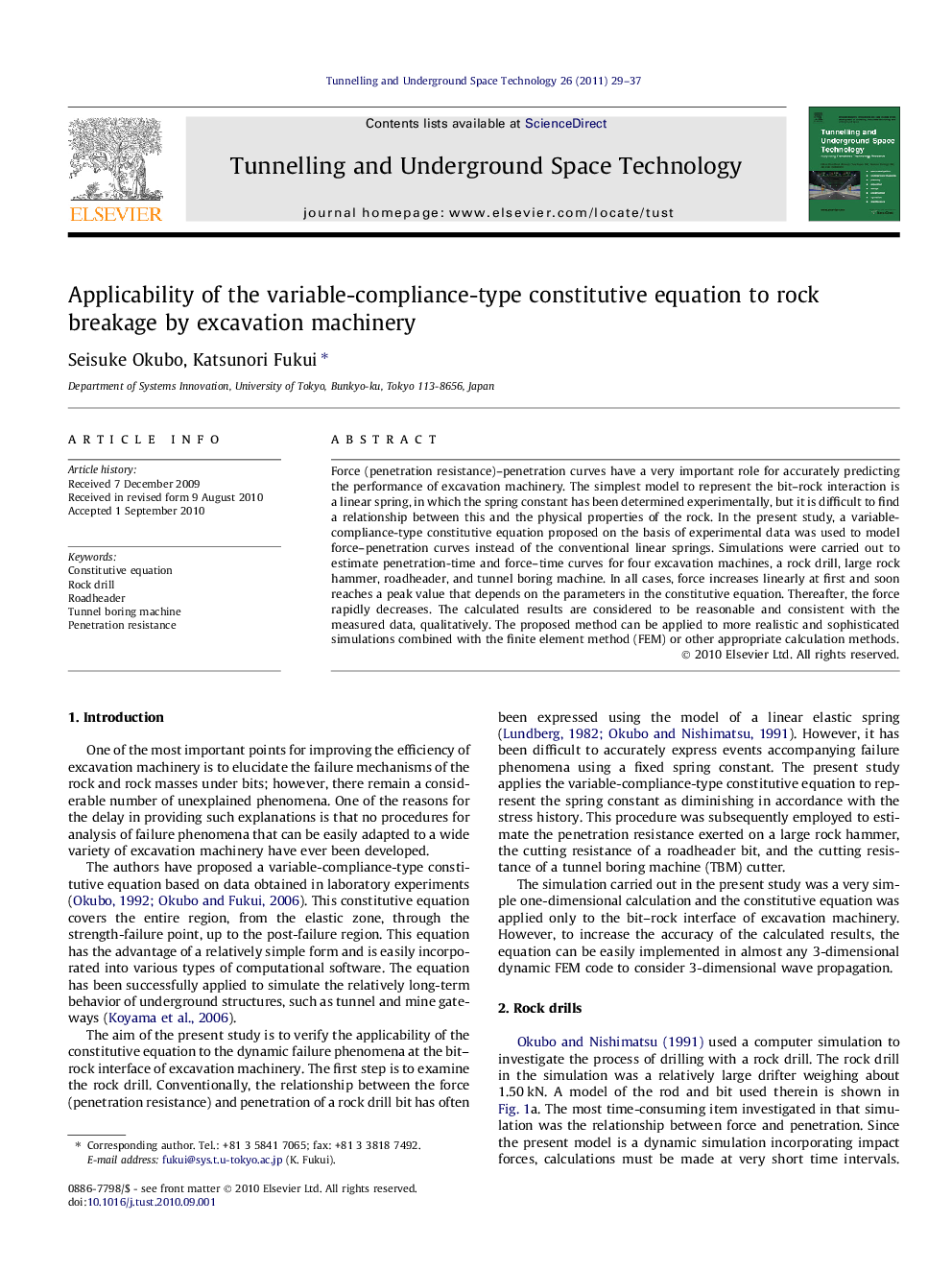| Article ID | Journal | Published Year | Pages | File Type |
|---|---|---|---|---|
| 311947 | Tunnelling and Underground Space Technology | 2011 | 9 Pages |
Force (penetration resistance)–penetration curves have a very important role for accurately predicting the performance of excavation machinery. The simplest model to represent the bit–rock interaction is a linear spring, in which the spring constant has been determined experimentally, but it is difficult to find a relationship between this and the physical properties of the rock. In the present study, a variable-compliance-type constitutive equation proposed on the basis of experimental data was used to model force–penetration curves instead of the conventional linear springs. Simulations were carried out to estimate penetration-time and force–time curves for four excavation machines, a rock drill, large rock hammer, roadheader, and tunnel boring machine. In all cases, force increases linearly at first and soon reaches a peak value that depends on the parameters in the constitutive equation. Thereafter, the force rapidly decreases. The calculated results are considered to be reasonable and consistent with the measured data, qualitatively. The proposed method can be applied to more realistic and sophisticated simulations combined with the finite element method (FEM) or other appropriate calculation methods.
